World War I at sea brought about aircraft carriers, the massive use of submarines, and commando attacks by scuba divers on naval bases. Italians were true pioneers in this field. They showed remarkable ingenuity and great courage.
After the outbreak of the Great War, both power blocs aimed to win over the Kingdom of Italy to their side. On May 23, 1915, it joined the fighting on the side of the Entente. It was a serious blow to the Central Powers, especially Austria-Hungary, whose fleet had to compete with the combined forces of France, Great Britain and Italy .
Despite the huge advantage, the Italians did not manage to gain an advantage in the Adriatic Sea. The Imperial-Royal Naval Forces adhered to the doctrine of fleet in being ), which meant being scared away just by being in your own ports.

Austro-Hungarian navy ships at the base in Pola (photo:public domain).
Downcast Austrians
The avoidance of open battle by opponents, the successes of the Central Powers' uboats and the compromising losses of the battleships Regina Margeritha, Benedetto Brin and Leonardo da Vinci severely damaged the reputation of the Italian navy not only in the eyes of its allies but also of its own society.
In the circle of Italian naval forces, the idea was born to create special assault troops intended for attacks on enemy ports . They were to be equipped with special surface and underwater units that would allow them to reach the Austro-Hungarian naval base in the city of Pola (today Pula in Croatia).
It had strong defensive devices, as the French submarine Curie, sunk on December 8, 1914 during an attempt to break into the interior of the port, found out.
Italians forgetful
The first to be built were 4 small torpedo boats (Cavalletta, Pulce, Grillo and Locusta) equipped with tracks for crossing wooden log dams and armed with two 450 mm torpedoes.
The first operation with their use, carried out on the night of April 13-14, 1918, ended in a disaster because the Italians were unable to get close to the heavy ships of the Habsburg fleet. As a result, the crews sank their small ships to prevent them from falling into enemy hands.
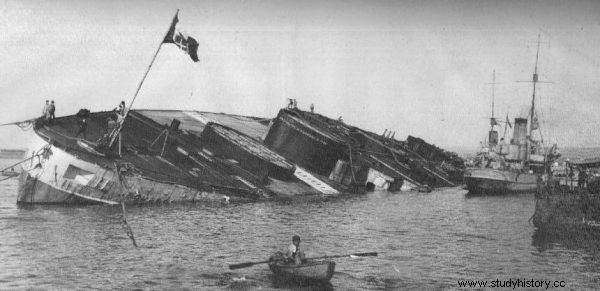
Wreck of the battleship Leonardo da Vinci in 1921 (photo:public domain).
A month later, the Grillo torpedo boat, commanded by Cpt. Maria Pellegrini. The ship approached the battleship Radetzky and launched both torpedoes. Unfortunately, no effect, because the Italians forgot to release the cargo . Then the Italian unit was sunk by patrol fire.
Deadly Leech
The idea of using a man-operated torpedo for the attack appeared as early as September 1915. It was put forward by Major Eng. Raffaele Rossetti, who presented his proposals to the high commanders of the Italian Navy. Lack of interest on the part of the authorities meant that the ambitious officer started to develop his project on his own.
On March 9, 1918, Rossetti carried out successful trials with a self-made torpedo. This time his work was appreciated by the naval staff. It was decided to use the structure called Mignatta (Leech) in combat.
The Mignatta was a modified version of the Italian 450mm torpedo. It was 4.5 meters long and had a speed of up to 4 knots. It was used to transport, under semi-immersion, two divers in special combat suits and two metal containers filled with 170 kg of explosive and equipped with magnetic suction cups.
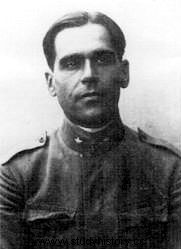
Raffaele Rossetti (photo:public domain).
The leech goes into action
On October 6, 1918, the Central Powers approached the United States with a proposal to start peace negotiations. For the Italians, it was a signal that the opportunity to use the leech in combat could be lost. It was decided to carry out the operation.
On October 31, 1918, a subversive group on board the PN65 torpedo boat set off from the Venetian port. It headed for the Imperial-Royal Navy base in Pola, commanded by Comdr. Constanzo Ciano, father of the later Italian Foreign Minister and son-in-law Benito Mussolini.
The attack was to be carried out by the creator of Mignatta, Major Rossetti and Capt. physician Raffaele Paolucci. A few miles from the entrance to the port, the torpedo was launched and then towed by a motorboat to a distance of about 0.5 km from the target.
The divers bypassed the first firewall and reached the port basin. After crossing three more dams, they reached their designated destination in the icy rain, which was the battleship Viribus Unitis, the flagship of the Austro-Hungarian Navy.
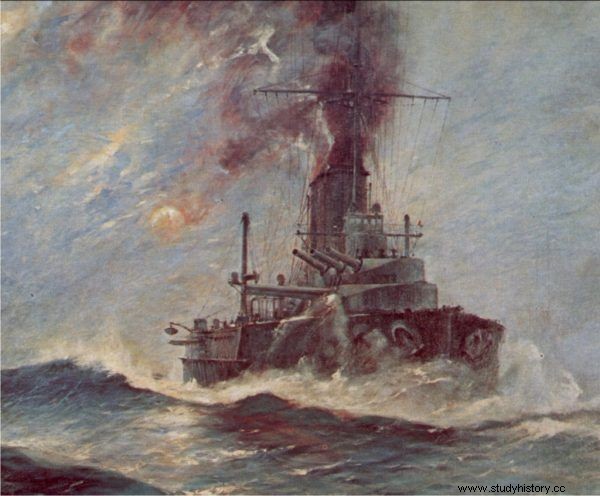
Viribus Unitis in the painting by Alexander Kircher (Public Domain).
Sorry surprise
To the surprise of the Italians, against the rules of the war, the ship was standing in the port fully illuminated, which made a hidden close-up difficult . At around 5.00, Major Rossetti armed the first charge and attached it to the battleship's hull below the waterline, between the fourth and fifth 150mm guns.
The second load could not be set up because the divers were detected by the crew of the battleship. Before being taken prisoner, Capt. Paolucci dropped the second charge, and then both daredevils sank Mignatta and surrendered.
On board the battleship, it turned out that the ship no longer belonged to the Habsburg fleet, as on October 30 it was completely handed over to the Serbs. This caused a depressurization in the port, as the crews boasting this decision were deprived of a large part of their commanding staff . The officers were mostly Austrian, Czech, German and Hungarian, so they left the port with the Commander-in-Chief of the fleet, Admiral Miklós Horthy.
Bloody Harvest
At that moment, the Italian officers informed the ship's commander, Cdr Janko Vukovic de Podkapelski, that the explosive had been planted. His decision to leave the ship for the crew caused a great deal of confusion.
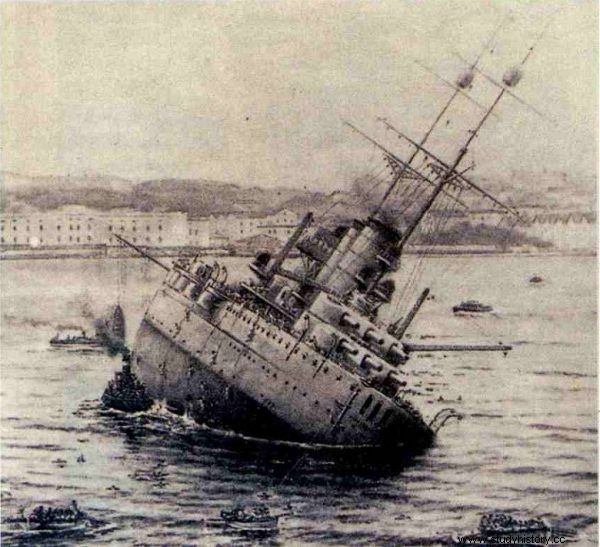
The sinking battleship Viribus Unitis (photo:public domain).
Eventually, at 6.44 am there was an explosion. Rossetti and Paolucci left the ship safely on the lifeboat and were able to admire the agony of their target. After a few minutes, the battleship turned upside down. More than 400 sailors were killed, including the commander , most of them pulled under the water by the vortex caused by the sinking colossus.
Italian scuba divers were transported aboard the old battleship Habsburg , where heard a second explosion . Thrown out by Cpt. Paolucci, the cargo drifted to the standing port of the base ship of the German u-boats Wien (7367 t displacement), which also sank . This is how the first fully successful Italian guided torpedo rally ended.
Tragic mistake
On November 5, 1918, the base in Pula was captured by the Italian army. At the same time, all the ships in the port, although officially belonging to the allied Kingdom of Serbia, were confiscated by Italians who did not want to strengthen the state with which they competed for the Dalmatian coast.
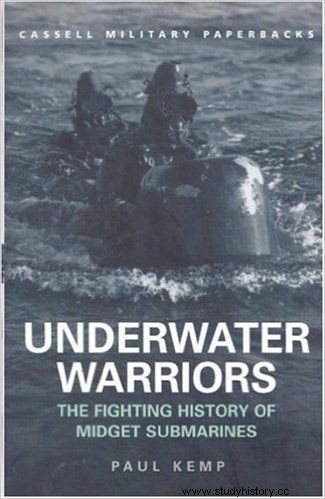
The article was based, inter alia, on on Paul Kemp's book Underwater Warriors (Brockhampton 1999).
The most valuable vessel they could seize, however, they sank themselves only a few days earlier.
Rossetti and Paolucci quickly returned to Italy, where many honors awaited them. Together with Ciano, they were awarded the Military Order of Savoy, the highest Italian military decoration. In addition, both heroes won a prize of 650,000 Lire each.
As a matter of honor, most of this money was given to the widows of the sailors who died aboard the Viribus Unitis.
The success of Rossetti and Paolucci gave impetus to the development of special naval assault forces. The crowning achievement of this process was the creation of the famous 10th Flotilla and its greatest success, the Alexandria raid in December 1941.
